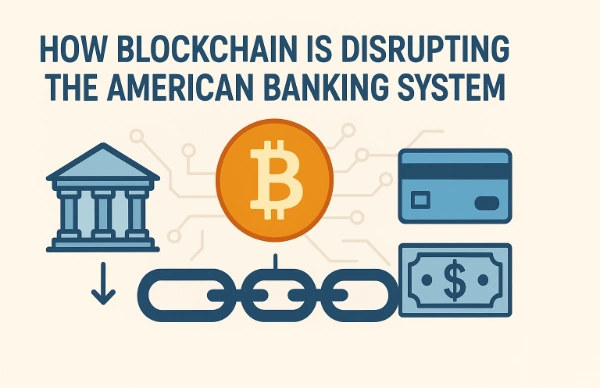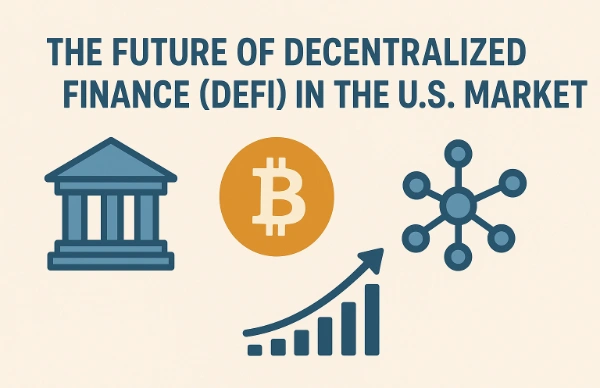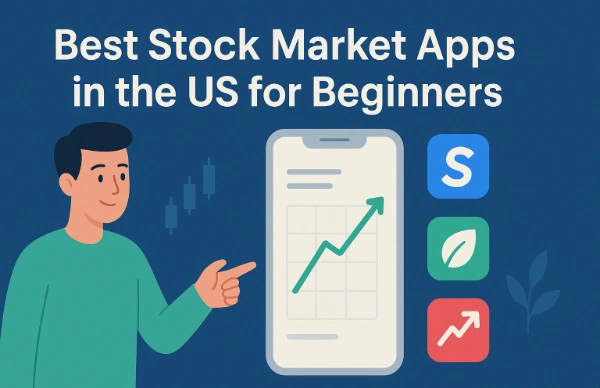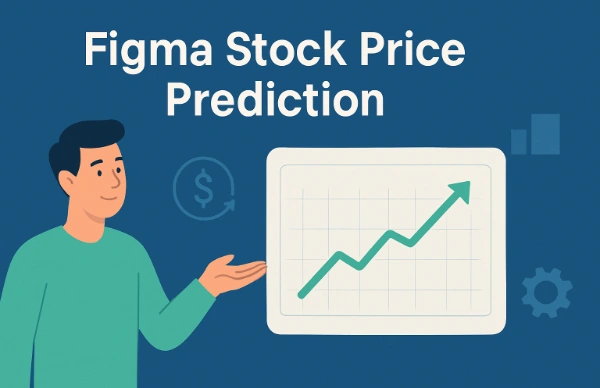Introduction
How Blockchain is Disrupting the US Banking System” The phrase isn’t just a catchy title—it reflects a revolution happening right now in the US financial landscape. For decades, US banks have been the backbone of the economy, serving as intermediaries for payments, loans, savings, and investments. But let’s be honest: the traditional banking system has always had some drawbacks. High fees, long processing times, lack of transparency, and overreliance on intermediaries have left customers disappointed.
The advent of blockchain. This technology, which began with Bitcoin in 2009, is no longer limited to cryptocurrencies. It is now reshaping the way financial transactions are processed, secured, and recorded. In fact, many experts argue that blockchain could do for banking what the internet did for communication—completely transform it. That’s why “How Blockchain Is Disrupting the US Banking System” is a relevant topic today for everyone from Wall Street giants to ordinary consumers using mobile banking apps.
In simple terms, blockchain is a decentralized ledger that records transactions across many computers. This eliminates the need for a central authority—like a bank—to verify and approve every single transaction. Instead, trust is built into the system through transparency and cryptography. Think of it like a digital notebook that anyone can write in, but no one can erase or tamper with.
In this article, we’ll dive deep into how blockchain is disrupting the US banking system—from payments and loans to fraud prevention and customer experience. We’ll also look at the challenges, opportunities, and future of blockchain in US finance. By the end, you’ll understand why the phrase “how blockchain is disrupting the US banking system” is being repeated in boardrooms, government offices, and fintech startups across the US.
Table of Contents
What is blockchain and why is it important to banking?
To understand how blockchain is disrupting the US banking system**, we first need to understand what blockchain actually is. Imagine you keep a notebook where you note every time money changes hands. But instead of one notebook, thousands of people have copies of it, and everyone updates their copies at the same time. That’s basically how blockchain works.
Here’s why blockchain is important for banking:
- Decentralization – Traditional banks act as intermediaries for every financial transaction. Blockchain eliminates the need for a central authority by distributing the transaction ledger across the network.
- Transparency – Every transaction is publicly recorded on the blockchain (although identities can remain anonymous). This means there are no hidden fees or questionable accounting tricks.
- Security – Transactions are cryptographically secure, making fraud and tampering nearly impossible.
- Efficiency – Instead of waiting 2-5 business days for cross-border payments, blockchain transactions can be completed in a matter of seconds.
| Feature | Traditional Banking | Blockchain Banking |
|---|---|---|
| Transaction Speed | 1–5 business days | Seconds to minutes |
| Cost of Transfers | High fees (3–7%) | Low or near-zero fees |
| Transparency | Limited (controlled by bank) | Full ledger visibility |
| Security | Vulnerable to hacks & errors | Cryptographic security |
| Accessibility | Requires account approval | Open to anyone with internet |
The table above shows why blockchain is considered revolutionary. By eliminating intermediaries, blockchain can save billions of dollars in transaction costs annually while increasing customer trust. No wonder phrases like How blockchain is disrupting the US banking system keep appearing in every financial news headline.
The Current State of the US Banking System
Before delving into how blockchain is disrupting the US banking system, let’s look at the current state of the US banking industry. Despite advances in digital banking, US banks are still highly centralized. Most financial transactions go through giant institutions like JPMorgan Chase, Bank of America, and Wells Fargo.
The problems with this system are obvious:
High fees – Whether it’s wire transfers, overdraft fees, or international payments, Americans pay some of the highest banking fees in the world.
Slow processing times – Sending money abroad often takes several days, not due to technical limitations, but due to outdated clearing systems like SWIFT.
Exclusion of the unbanked – Millions of Americans, especially in rural or low-income communities, are underbanked or underbanked.
Obfuscation – Customers often don’t have real-time insight into how transactions are processed, approved or delayed.
This broken model is what makes blockchain disruption not only possible, but inevitable. Today, customers expect instant payments, transparent fees, and security that banks have difficulty providing. Fintech companies are already leveraging blockchain to meet these demands. If banks don’t adapt, they risk becoming irrelevant in the very system they built.
So how blockchain is disrupting the US banking system isn’t just a question—it’s a warning sign for banks to modernize before they get left behind.
Also read: Step-by-Step Guide to Investing in ASX Shares as a U.S. Citizen
How blockchain is disrupting the US banking system through payments
One of the most obvious areas where blockchain shines is payments. Let’s face it: the US banking payment structure seems antiquated in the age of instant messaging and same-day shipping. Why should a wire transfer take three days when an email reaches the other side of the world in a matter of seconds?
Here’s how blockchain is changing that:
Cross-border payments – Traditionally, sending $1,000 from the US to Mexico involved multiple banks, each receiving their own amount, and the final payment coming several days later. With a blockchain-based network like Ripple or Stellar, that same transaction is completed in a matter of seconds, at a fraction of the cost.
Lower fees – Instead of paying $40 for an international wire transfer, blockchain payments often cost just a few cents in network fees.
24/7 access – Unlike banks that are closed on weekends or holidays, blockchain never stops. A payment can be made and confirmed at 2 a.m. on Christmas Eve if needed.
Take JPMorgan’s Onyx blockchain network, which is already handling billions of dollars worth of cross-border transactions for institutional clients. Even the Federal Reserve is testing blockchain-inspired instant settlement solutions.
This is why the phrase “how blockchain is disrupting the US banking system” fits the payments sector so perfectly—it represents a huge shift toward speed, efficiency, and accessibility that traditional banks can’t match.
Also read: Top 10 ASX Shares That Outperformed the Australian Market in 2025
How blockchain is disrupting lending and loan distribution in the US banking system
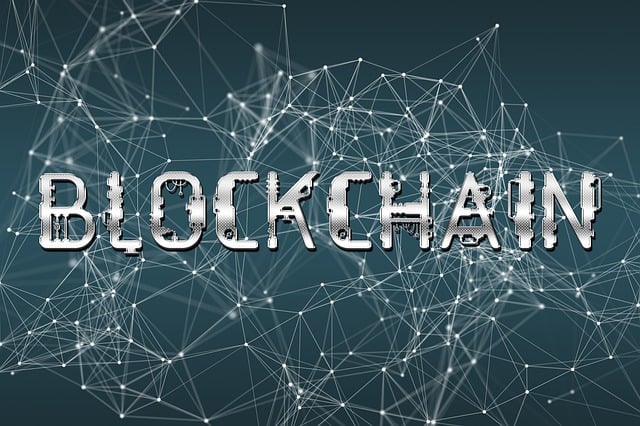
Another impressive way blockchain is disrupting the US banking system is in lending and loan distribution. Traditionally, getting a loan in the US involved endless paperwork, waiting for approval, and paying often-unreasonable interest rates. But blockchain is rewriting the rules.
Here’s how:
Peer-to-peer lending – Blockchain platforms allow individuals to lend money directly to others without going through a bank. This leads to a lack of intermediaries and often lower interest rates.
Smart contracts – Instead of relying on lawyers or loan officers, blockchain enables loans to be handled by self-executing smart contracts. If conditions are met (such as repayment), the contract is automatically enforced.
Global access to credit – Millions of Americans who don’t have a traditional credit history could one day use blockchain-based lending platforms that evaluate borrowers based on transparent, blockchain-recorded data rather than old credit scores.
For example, DeFi (decentralized finance) platforms like Aave and Compound already allow users to borrow and lend crypto assets directly on the blockchain. Although it has not yet gone mainstream in the US banking system, this model highlights how blockchain is transforming the US banking system by redefining credit accessibility.
Blockchain in Fraud Prevention and Security
One of the most pressing issues in the U.S. banking industry is fraud. Every year, billions of dollars are lost due to identity theft, credit card fraud, and cyberattacks. Customers often find themselves locked in lengthy disputes with banks, trying to prove that a fraudulent transaction wasn’t theirs. This lack of trust is one of the biggest reasons people are paying attention to how blockchain is disrupting the American banking system.
Blockchain’s strength lies in its immutable ledger. Once a transaction is recorded, it can’t be altered or deleted. That means hackers can’t secretly change financial records, and fraudulent transactions become nearly impossible to cover up. Imagine a world where every dollar transferred leaves a permanent, verifiable trail—suddenly, fraud detection becomes much easier.
Here’s how blockchain helps in fraud prevention:
- Immutable Records – Transactions are locked permanently on the blockchain. No one, not even banks, can erase or manipulate them.
- Enhanced Authentication – Blockchain enables multi-signature verification, ensuring that no single individual can authorize large transfers without consensus.
- Identity Protection – With blockchain-based digital IDs, personal information doesn’t need to be shared every time you make a transaction, reducing identity theft risks.
A real-world example is IBM’s blockchain solutions being adopted by U.S. banks to improve transaction verification and cut down on fraud. This is why how blockchain is disrupting the American banking system isn’t just a tech trend—it’s a safety revolution. Banks that adopt blockchain will not only reduce fraud losses but also restore much-needed trust with their customers.
Also read: How to Analyze a Company Financials Before Buying Stocks in the USA
How Blockchain Is Disrupting the American Banking System With Smart Contracts
If there’s one blockchain feature that truly excites bankers and tech enthusiasts alike, it’s smart contracts. These are self-executing agreements where the terms are directly written into computer code. Once predefined conditions are met, the contract automatically executes itself without the need for middlemen like lawyers, brokers, or bank officers.
Let’s look at how smart contracts are reshaping American banking:
- Mortgages – Traditionally, buying a house involves banks, escrow agents, lawyers, and endless paperwork. With smart contracts, the process could be reduced to a few clicks where funds are automatically released once ownership transfer is confirmed.
- Insurance – Claims often take weeks to process, with disputes between policyholders and insurers. Smart contracts can trigger instant payouts once required conditions (like accident reports) are met.
- Loans and Credit – Smart contracts remove delays in loan approvals. Once a borrower meets the terms (such as collateral verification), the funds are automatically disbursed.
This is a textbook example of how blockchain is disrupting the American banking system by cutting out inefficiencies. For customers, it means lower costs, faster services, and fewer human errors. For banks, it means reduced administrative overhead and greater efficiency.
Imagine if every American could refinance a mortgage, claim insurance, or apply for a loan in minutes instead of weeks. That’s not a futuristic dream—it’s what blockchain is bringing to life.
The Role of Cryptocurrencies in American Banking
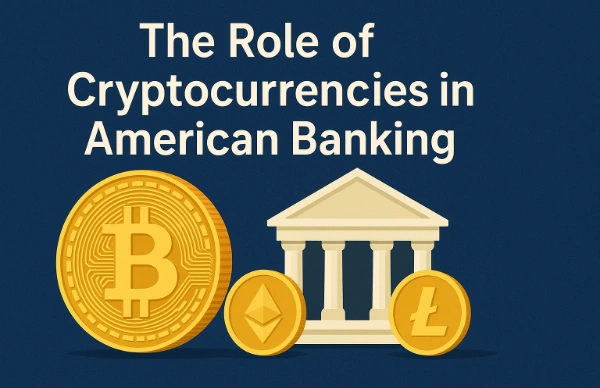
No discussion on how blockchain is disrupting the American banking system would be complete without addressing cryptocurrencies. While blockchain is the technology, cryptocurrencies like Bitcoin, Ethereum, and stablecoins are its most visible products.
Here’s how cryptocurrencies are impacting U.S. banking:
- Bitcoin as a Store of Value – Many Americans now see Bitcoin as “digital gold,” a hedge against inflation and traditional market risks.
- Ethereum for Smart Contracts – Ethereum powers thousands of decentralized applications that are challenging banking services, from payments to asset management.
- Stablecoins for Payments – Unlike volatile cryptocurrencies, stablecoins (pegged to the U.S. dollar) are becoming popular for quick, low-cost transfers.
Even the U.S. government is exploring a Central Bank Digital Currency (CBDC), often called the “digital dollar.” If launched, it would be one of the biggest examples of how blockchain is disrupting the American banking system, as it would fundamentally change how money is issued and circulated.
Banks are also adapting. JPMorgan has launched its own digital coin, JPM Coin, for internal payments. Bank of America and Wells Fargo are studying stablecoin settlement systems. Slowly but surely, traditional banks are acknowledging that crypto is no longer a fringe concept but a key part of the future.
Also read: How International Investors Can Buy and Trade ASX Shares from the USA in 2025
How Blockchain Is Disrupting the American Banking System With Decentralized Finance (DeFi)
If you want to see the most radical form of blockchain banking, look no further than Decentralized Finance (DeFi). Unlike traditional banking, DeFi eliminates banks altogether and replaces them with decentralized platforms that operate entirely on blockchain.
Here’s what DeFi brings to the table:
- Yield Farming – Users can lend their digital assets and earn interest far higher than traditional savings accounts.
- Decentralized Exchanges (DEXs) – Instead of trading stocks or currencies through brokers, people can exchange assets directly using blockchain protocols.
- Staking – By holding certain cryptocurrencies, users can earn rewards for helping secure the blockchain network.
This is a disruptive threat because DeFi platforms provide many of the same services as banks—loans, savings, trading—but without branches, tellers, or corporate executives. For the average American consumer, it means financial services that are faster, cheaper, and more inclusive.
Of course, DeFi isn’t without risks, such as volatility and lack of regulation. But it’s growing rapidly, with billions of dollars locked in DeFi platforms. That growth highlights once again how blockchain is disrupting the American banking system by showing people they don’t necessarily need banks to manage money anymore.
Impact on Investment and Wealth Management
The U.S. wealth management industry is massive, with trillions of dollars invested in stocks, bonds, mutual funds, and retirement accounts. But once again, blockchain is shaking up the landscape.
Here are some key disruptions:
- Tokenization of Assets – Blockchain allows real-world assets like real estate, art, or company shares to be “tokenized” into digital units that can be easily traded.
- Fractional Ownership – Instead of needing $500,000 to invest in a building, blockchain makes it possible to buy a small digital share worth $500.
- Improved Transparency – Investors can track ownership, dividends, and transactions in real time without waiting for financial statements.
For wealth managers, this means a completely new way of serving clients. For everyday Americans, it means access to investments that were previously out of reach.
Imagine being able to invest in Manhattan real estate or a Picasso painting with just a few clicks on your smartphone. That’s the kind of democratization blockchain is bringing to finance. And it’s another clear example of how blockchain is disrupting the American banking system by breaking down barriers that kept wealth creation exclusive to the elite.
Regulatory Challenges in the USA
Whenever we talk about how blockchain is disrupting the American banking system, we can’t ignore regulation. The U.S. financial sector is one of the most heavily regulated industries in the world, and blockchain introduces a whole new set of challenges for lawmakers.
Here are the key hurdles:
- Unclear Definitions – Is a cryptocurrency like Ethereum a currency, a security, or a commodity? The SEC, CFTC, and Federal Reserve often disagree, creating legal confusion.
- Compliance and KYC – Banks are required to follow strict “Know Your Customer” and anti-money laundering rules. Blockchain’s pseudonymous nature complicates this.
- Taxation – Every crypto transaction is considered taxable, which creates complexity for individuals and institutions trying to adopt blockchain payments.
- Consumer Protection – Regulators worry about scams, rug pulls, and volatility in decentralized finance platforms.
Despite these challenges, U.S. regulators are slowly moving toward clearer frameworks. For example, the SEC has begun cracking down on fraudulent token offerings, while the Treasury has proposed new rules for stablecoin issuers.
This shows that how blockchain is disrupting the American banking system isn’t just about technology—it’s also about government adaptation. Without smart regulation, innovation could be stifled. But with supportive rules, blockchain could thrive and make the U.S. financial system stronger, safer, and more competitive globally.
Major American Banks Adopting Blockchain
It might sound ironic, but while blockchain was originally designed to replace banks, many U.S. banking giants are now embracing it. Why? Because they realize that how blockchain is disrupting the American banking system isn’t just a threat—it’s also an opportunity.
Some real examples:
- JPMorgan Chase – Launched its own blockchain network, Onyx, which processes billions in wholesale payments and enables JPM Coin for instant settlements.
- Bank of America – Holds dozens of blockchain-related patents and is experimenting with blockchain to improve trade finance and supply chain operations.
- Wells Fargo – Testing blockchain-based settlement solutions for cross-border transfers.
- Citibank – Exploring digital asset custody services to serve institutional investors.
Instead of fighting blockchain, these banks are leveraging it to cut costs, speed up services, and improve security. This hybrid approach—where blockchain is integrated into existing systems—might be the most realistic form of adoption in the near future.
Ultimately, the fact that Wall Street giants are investing heavily in blockchain proves that how blockchain is disrupting the American banking system isn’t just theory anymore—it’s happening in boardrooms across the country.
How Blockchain Is Disrupting the American Banking System in Customer Experience
Let’s not forget the most important part of banking: the customer. For years, Americans have tolerated slow services, confusing fees, and limited transparency. But blockchain is raising expectations.
Here’s how blockchain is transforming customer experience:
- Faster Transactions – No more waiting days for money to clear; blockchain makes near-instant transfers the new norm.
- Lower Costs – With fewer intermediaries, customers save on fees for transfers, loans, and investments.
- Transparency – Customers can track every stage of a transaction in real-time on a blockchain ledger.
- Financial Inclusion – Blockchain-powered mobile wallets could provide banking access to millions of unbanked Americans.
Imagine walking into a car dealership and paying with a blockchain-based transfer that settles instantly, without worrying about hidden fees or delays. Or think about sending money abroad to family without losing 10% to intermediaries. These improvements highlight how blockchain is disrupting the American banking system in ways customers can directly feel.
In short, blockchain makes banking simpler, faster, and more customer-friendly. And in today’s world, where user experience matters more than ever, that’s a huge advantage.
The Future of Blockchain in American Banking
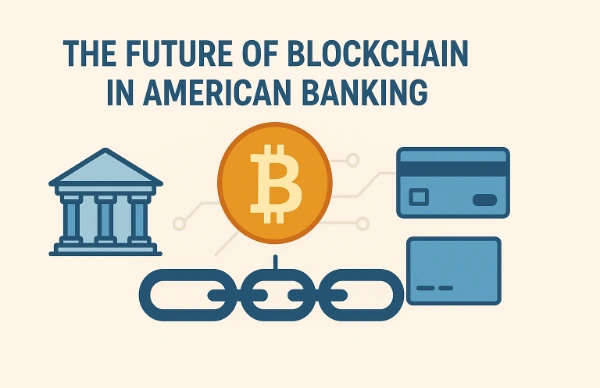
Looking ahead, how blockchain is disrupting the American banking system is only the beginning. The next decade could see even more profound changes.
Some predictions:
- Mainstream Adoption of CBDCs – The U.S. could roll out a digital dollar, making blockchain part of everyday banking.
- Merging of AI and Blockchain – Combining artificial intelligence with blockchain could create smarter fraud detection, personalized financial products, and predictive banking.
- Fully Tokenized Economy – From real estate to stocks, more assets may be tokenized and traded on blockchain platforms.
- Hybrid Banking Models – Traditional banks may coexist with decentralized finance platforms, offering customers a mix of centralized security and decentralized efficiency.
The real question is not if blockchain will disrupt American banking, but how fast and to what extent. Banks that embrace innovation will survive and thrive, while those that resist could face the same fate as Blockbuster in the age of Netflix.
That’s why the phrase “How Blockchain Is Disrupting the American Banking System” is more than just a buzzword—it’s a roadmap for the future of finance.
Pros and Cons of Blockchain in the Banking System
Like any major innovation, blockchain brings both benefits and challenges. To fully understand how blockchain is disrupting the American banking system, we need to look at both sides of the coin.
Pros:
- Faster transactions and instant settlements
- Lower fees for customers and banks
- Stronger security and fraud prevention
- Increased transparency in operations
- Greater financial inclusion for unbanked populations
Cons:
- Lack of clear regulation in the U.S.
- High energy consumption (for some blockchains like Bitcoin)
- Volatility of cryptocurrencies
- Resistance from traditional financial institutions
- Technical barriers for mass adoption
In short, blockchain is not a silver bullet. But its advantages are powerful enough to outweigh its drawbacks—especially as the technology continues to mature.
The takeaway? How blockchain is disrupting the American banking system isn’t about destroying banks but about forcing them to evolve. Those that adapt will not just survive—they’ll lead the next financial revolution.
Conclusion – How Blockchain Is Disrupting the American Banking System
We’ve now walked through every angle of how blockchain is disrupting the American banking system, from payments and lending to fraud prevention, smart contracts, cryptocurrencies, DeFi, investment, regulations, and customer experience. The message is clear: blockchain isn’t just a new tool; it’s a paradigm shift.
The American banking system, for all its strengths, has long been plagued by inefficiencies—slow transactions, high fees, fraud risks, and lack of transparency. Blockchain addresses these pain points directly, offering speed, cost savings, enhanced security, and democratized access to financial services. That’s why the phrase “How Blockchain Is Disrupting the American Banking System” is echoing across boardrooms, government meetings, fintech startups, and even among regular consumers.
However, disruption doesn’t mean destruction. Banks aren’t going away anytime soon. Instead, what we’re seeing is an evolution. Major institutions like JPMorgan, Bank of America, and Wells Fargo are already experimenting with blockchain to improve services. Regulators are slowly creating frameworks to balance innovation with security. And customers are beginning to expect blockchain-powered convenience as the new normal.
The future of American banking will likely be a hybrid model—where blockchain works alongside traditional finance, combining the trust and stability of regulated banks with the speed, efficiency, and inclusivity of blockchain systems.
In the end, how blockchain is disrupting the American banking system isn’t a question of “if” but “how far and how fast.” For consumers, it means better financial products and services. For banks, it’s a call to adapt or risk irrelevance. And for America as a whole, it’s an opportunity to lead the world in financial innovation once again.
FAQs
Why is blockchain considered a threat to the American banking system?
Blockchain is a threat because it removes the need for banks as middlemen in transactions. People can transfer money, borrow, or invest directly using blockchain-based systems. This challenges banks’ traditional revenue streams from fees, interest, and processing charges. At the same time, it forces banks to innovate, which is why how blockchain is disrupting the American banking system is such a hot topic.
Will blockchain completely replace banks in the USA?
It’s unlikely that blockchain will completely replace banks in the near future. Banks provide trust, regulatory oversight, and customer protection that blockchain alone can’t fully guarantee. Instead, the future will likely be a hybrid model where banks adopt blockchain to improve services. That’s the most realistic outcome of how blockchain is disrupting the American banking system.
How does blockchain make payments faster and cheaper in the U.S.?
Traditional payment systems rely on multiple intermediaries—banks, clearinghouses, and networks like SWIFT. Each step adds cost and delay. Blockchain removes these middlemen by directly connecting parties through a shared ledger. This is why cross-border payments that take days can be settled in seconds on blockchain networks. It’s one of the clearest examples of how blockchain is disrupting the American banking system.
What role will U.S. regulations play in blockchain adoption?
Regulation is the biggest wildcard in blockchain’s future. Clear, supportive rules could accelerate innovation and adoption, while overly restrictive laws could push blockchain companies out of the U.S. The SEC, Federal Reserve, and Treasury Department are all working on frameworks to balance innovation with security. This regulatory evolution is central to how blockchain is disrupting the American banking system.
Is blockchain safe for American consumers?
Yes, blockchain is generally considered safer than traditional banking because transactions are encrypted and immutable. However, risks exist, especially in unregulated areas like DeFi or volatile cryptocurrencies. For mainstream adoption, safety will depend on banks and regulators building secure, customer-friendly blockchain solutions. Ultimately, safety is another key element of how blockchain is disrupting the American banking system.
Final Words
The phrase “How Blockchain Is Disrupting the American Banking System” has appeared throughout this article because it represents a once-in-a-generation transformation. Blockchain is not just changing the tools banks use—it’s rewriting the rules of finance in America.
From payments to lending, from security to investments, and from regulation to customer experience, blockchain is leaving no stone unturned. Whether you’re a banker, policymaker, investor, or just someone using a checking account, blockchain will impact your financial life sooner than you think.
The American banking system is at a crossroads. It can resist and risk becoming outdated, or it can embrace blockchain and lead the next era of global finance. The choice is clear. The disruption is already here. And the future is being built on blockchain.
